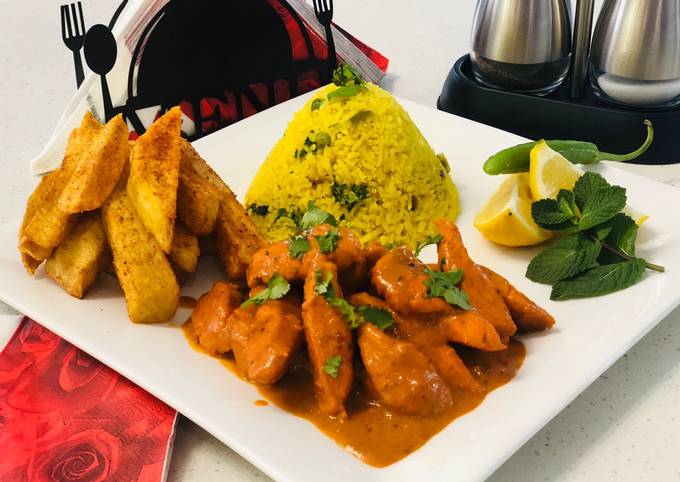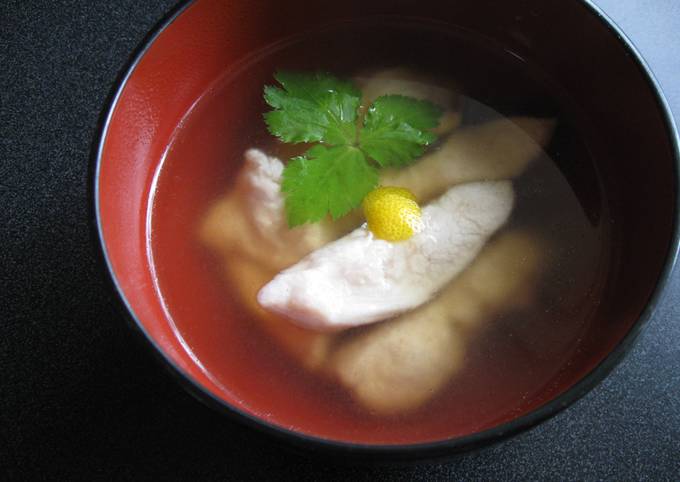
Hey everyone, I hope you’re having an amazing day today. Today, we’re going to make a special dish, salmon & wombok milk soup. One of my favorites food recipes. This time, I will make it a little bit tasty. This will be really delicious.
Salmon & Wombok Milk Soup is one of the most well liked of current trending foods on earth. It’s enjoyed by millions daily. It’s simple, it’s quick, it tastes delicious. They’re fine and they look wonderful. Salmon & Wombok Milk Soup is something which I have loved my entire life.
Salmon /ˈsæmən/ is the common name for several species of ray-finned fish in the family Salmonidae. Other fish in the same family include trout, char, grayling, and whitefish. Salmon are native to tributaries of the North Atlantic (genus Salmo) and Pacific Ocean (genus Oncorhynchus). In Norway - a major producer of farmed and wild salmon - farmed and wild salmon differ only. Перевод слова salmon, американское и британское произношение, транскрипция, словосочетания, примеры использования.
To get started with this recipe, we have to first prepare a few ingredients. You can cook salmon & wombok milk soup using 8 ingredients and 7 steps. Here is how you cook it.
The ingredients needed to make Salmon & Wombok Milk Soup:
- Make ready 2 skinless Salmon Fillets *about 250g
- Prepare 2 pinches Salt
- Prepare 2 tablespoons Sake (Rice Wine)
- Prepare 1/2 Wombok *500 to 600g
- Take 2 cups Chicken Stock *OR 2 cups Water and 2 teaspoons Asian Chicken Bouillon Powder
- Prepare 2 cups Milk
- Take Salt & White Pepper
- Make ready 2 tablespoons Potato Starch OR Corn Starch *mixed with 2 tablespoons Water
The unpronounced l was later inserted to make the word appear closer to its Latin root. Salmon is a fish that spends the beginning and end of its life in fresh water, with the remaining time spent in the ocean. Its meat is typically pink, while the skin is silver and gray. Typical cuts are the steak and fillet.
Instructions to make Salmon & Wombok Milk Soup:
- Season Salmon Fillets with Salt and set aside while you are preparing other ingredients.
- In a small bowl, combine Potato Starch (OR Corn Starch) and Water. Wash Wombok and slice 2cm thick.
- Heat Chicken Stock in a large saucepan or pot over medium heat, add hard parts of Wombok, cover with a lid, and bring to the boil. Then add the softer parts, lower the heat and simmer.
- *Note: You might think 1/2 Wombok is far too much, but the volume will decrease, and 1/2 is right amount for 4 servings.
- Meanwhile, place Salmon Fillets in a small frying pan or a separate saucepan, sprinkle with Sake (Rice Wine), cover with a lid, and cook over low heat for 5 minutes or until cooked. Transfer to a plate, break into smaller pieces, and remove all bones. *Note: Any liquid in the pan can be added to the soup.
- When Wombok is cooked, add Milk, and bring back to the boil. Season with Salt & Pepper, then gradually add Potato Starch mixture, stirring, and cook until the soup thickens.
- Add Salmon pieces and all the liquid, and stir to combine.
Its meat is typically pink, while the skin is silver and gray. Typical cuts are the steak and fillet. The filet is easier to serve, because it does not contain any of the spine. Salmon, originally, the large fish now usually called the Atlantic salmon (Salmo salar), though more recently the name has been applied to similar fishes of the same The six species of Pacific salmon. Salmon definition, a marine and freshwater food fish, Salmo salar, of the family Salmonidae, having pink flesh, inhabiting waters off the North Atlantic coasts of Europe and North America near the.
So that’s going to wrap it up for this special food salmon & wombok milk soup recipe. Thank you very much for reading. I’m confident that you will make this at home. There is gonna be interesting food at home recipes coming up. Remember to bookmark this page in your browser, and share it to your loved ones, friends and colleague. Thanks again for reading. Go on get cooking!


